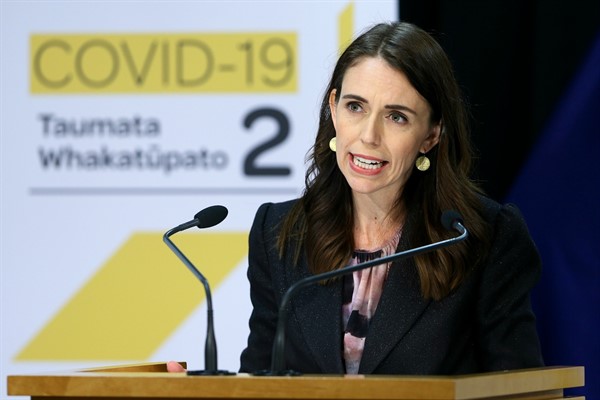In late January, President Donald Trump announced the formation of a Coronavirus Task Force, made up of 12 senior officials who would be responsible for leading the U.S. response to COVID-19. All were men. On Feb. 29, Vice President Mike Pence, the head of the task force, posted a now infamous photo to his Twitter account of a “very productive meeting,” with more than a dozen men and no women sitting around a table in the White House’s Situation Room. By early March, two women had been appointed to the team: Deborah Birx, who took the high-profile role of response coordinator, and Seema Verma, the administrator for Medicare and Medicaid. But throughout January and most of February, the most crucial early period of the U.S. response to COVID-19, only men were part of the Trump administration’s decision-making team.
The reluctance to include even a minority of women in high-level roles is an all-too common pattern, from corporate board rooms to peace negotiations. In the health care sector—as in politics, business and the military—men dominate leadership positions. Just over 10 percent of countries are led by a woman today. And only a quarter of the world’s senior health positions are filled by women, even though women constitute almost 70 percent of the labor force in the health sector globally.
Given that disparity, the many commentators who have highlighted the need to ensure women’s participation in coronavirus-related decision-making, and to promote gender equality in responses, have been encouraging. It is a sign that experts learned from the relative neglect of gender dimensions during previous crises, including the Ebola outbreak in West Africa, in 2014 and 2015, and the global financial crisis. Increasing participation by women in high-level decision-making and fostering gender-inclusive responses to the pandemic are distinct agendas, but they are also complementary. Having more women in senior roles frequently leads to policies that are more sensitive to gender issues and inequalities. Historically, women have tended to be the pathbreakers on gender issues, though that is changing, as some male leaders, such as Canadian Prime Minister Justin Trudeau and French President Emmanuel Macron, have demonstrated their commitments to gender inclusion in their governments.

